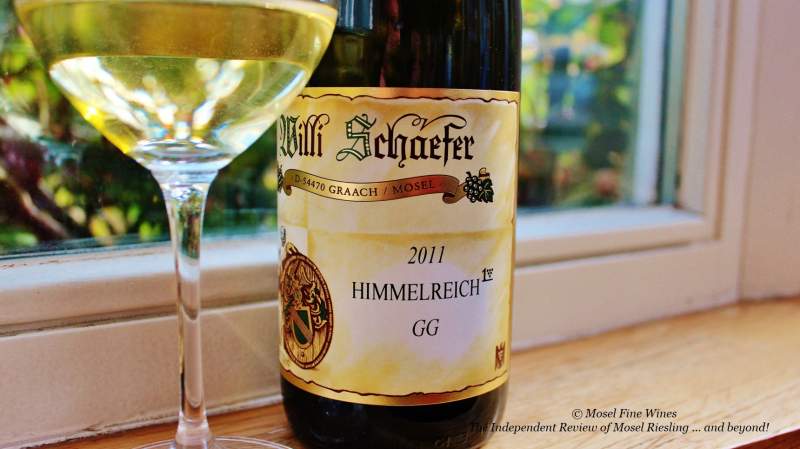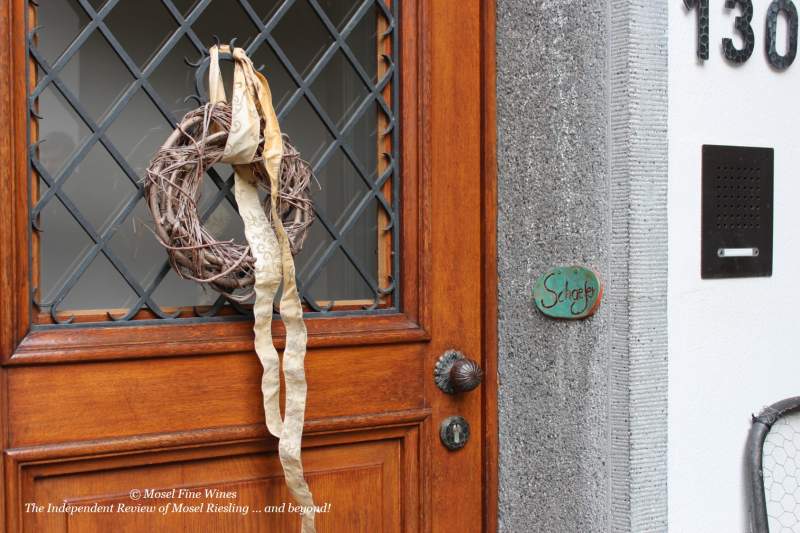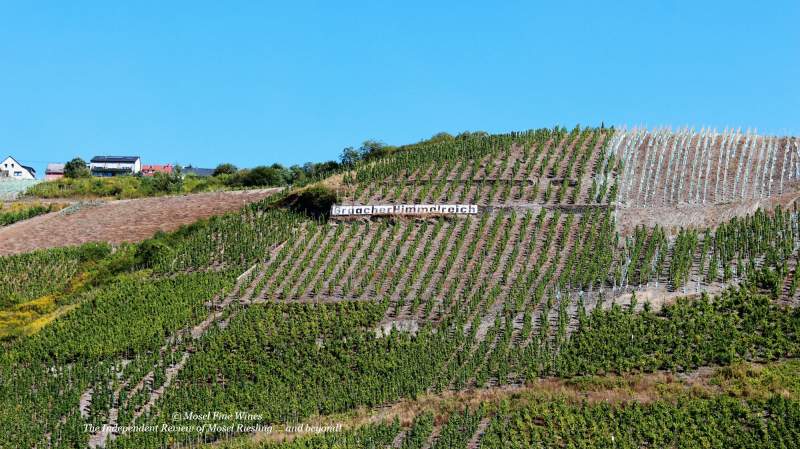April 8, 2021 | News | Issue Highlights | Mature Riesling

The mild acidity and aromatic purity of 2011 proved beneficial for dry Riesling in the Mosel, as Willi Schaefer underlined with its brilliant Himmelreich GG.


The upcoming Mosel Fine Wines Issue No 56 (April 2021) will feature a comprehensive retrospective of the 2011 vintage including high end dry German Riesling.
The richness and milder acidity of 2011 yielded much dry Riesling chararterized by power and phenolic presence. There are however a few great exceptions, such as the gorgeously delicate 2011er Himmelreich GG by Willi Schaefer
In the eyes of many wine lovers, Weingut Willi Schaefer stands as one of the foundations of Riesling and this not only for Graach but for the Mosel as a whole.
The basis of the Estate's success has been its continued quest for elegance, as Christoph Schaefer underlined: “We want our wines to be elegant, lively, and animating. All our winemaking is geared towards that. We do not have a set recipe in our winemaking or vineyard management. We may harvest earlier or later depending on the quality and maturity of each grape. In principle, we leave our wines in traditional Fuder. But this may be for more or less time in function of the vintage. We just deal with nature every year in order to give our wines some inner harmony.”
In order to retain freshness, the Estate does not defoliate, aims at low yields so that the grapes are ripe early, and harvest early in order to get ripe grapes with not excessive sugar content. They also press whole-bunch and fraction the pressing to retain lightness and acidity. Winemaking is as traditional as can be: Wild yeasts, old Fuder casks, no additives or other interventions except for racking, and a little sulfur and filtering at bottling.

For long (and for many wine lovers), Willi Schaefer rimes with fruity-styled or sweet Riesling heaven. And this is understandable as, still today, much of its production is centered around these styles.
In 2009, it decided to have a first go at producing a top-end dry Riesling (referred to as GG by growers which are members of the VDP). As Christoph explains: “My father did already produce some dry wines as well and we regularly did too which we did however sell as Graacher. In 2009, we felt that the conditions were ripe to make our first attempt at a GG.”
Given its traditional approach to winemaking, it does not produce a GG in every vintage: “as for all our wines, we produce the wines which are suited to the vintage conditions. Sometimes, this yields more Auslese, in other vintages more Kabinett. We apply the same approach also for our dry wines.” So far, GGs were only produced in 2009, 2011, 2012, and 2018.
The Estate decided to rely on parcels in the Graacher Himmelreich for its top end dry Riesling: “It is not a matter of principle but, so far, our GGs have all come from our parcels in the Himmelreich as this vineyard is often a bit fruitier which adds to the charm of a dry wine.”

In 2011, the GG came from a parcel in the “dark red” sector called Gehr. As Christoph explained, “we really rely on the quality of the grapes rather than a particular parcel. In 2011, this part of the Himmelreich with slightly deeper soil proved ideal.”
As we explained in the beginning, 2011 proved a tad too ripe in many parts of Germany for yielding truly great dry Riesling (as readers will see, there are however some roaring exceptions!). It is therefore not surprising that the "cooler" Mosel fared comparably well. However, even in the Mosel, few wines showed the finesse and elegance of the 2011er Graacher Himmelreich by Willi Schaefer: It proves stunningly balanced, ethereally light-footed yet packed with flavors and delivers all that with a modest 12% of alcohol.
We had already noticed in our retrospective of 2009 (another ripe vintage) how the Mosel made strides in quality in its dry wines. This proved amply confirmed in 2011, especially at the hand of such as master of elegance as the schaefers!
The full retrospective on 2011 dry German Riesling stunning will appear in the upcoming Mosel Fine Wines Issue No 56 (April 2021).
You are a subscriber and miss this Issue?
Simply send us a request by
email
and we will be happy to send you a copy.
You are not yet a subscriber and wish to get this Issue?
Subscribe free of charge by registering yourself here below and ask us for a copy by email.
2011er
Willi Schaefer
Graacher Himmelreich Riesling GG
12 12
94
The 2011er Himmelreich GG, as it is referred on the consumer label, offers a gorgeously refreshing nose of cassis, white peach, a touch of orange zest, herbs, spices, a hint of whipped cream, and fine smoky elements. The wine is gorgeously playful and animating on the dry-tasting rather than bone-dry palate. The sense of freshness and precision despite a hint of cream is really remarkable. The finish is playful, light-footed, and incredibly balanced. A touch of tartness adds to the sense of grip and focus emerging from this wine. This is a truly remarkable dry wine which brings everything together and delivers this with a remarkable low 12% of alcohol. What a success! Now-2031
© Text by Mosel Fine Wines "The Independent Review of Mosel Riesling ... and beyond!"
Disclaimer: Mosel Fine Wines is an independent publication and has no commercial relationship with any Estate, association or organization featured in this article.